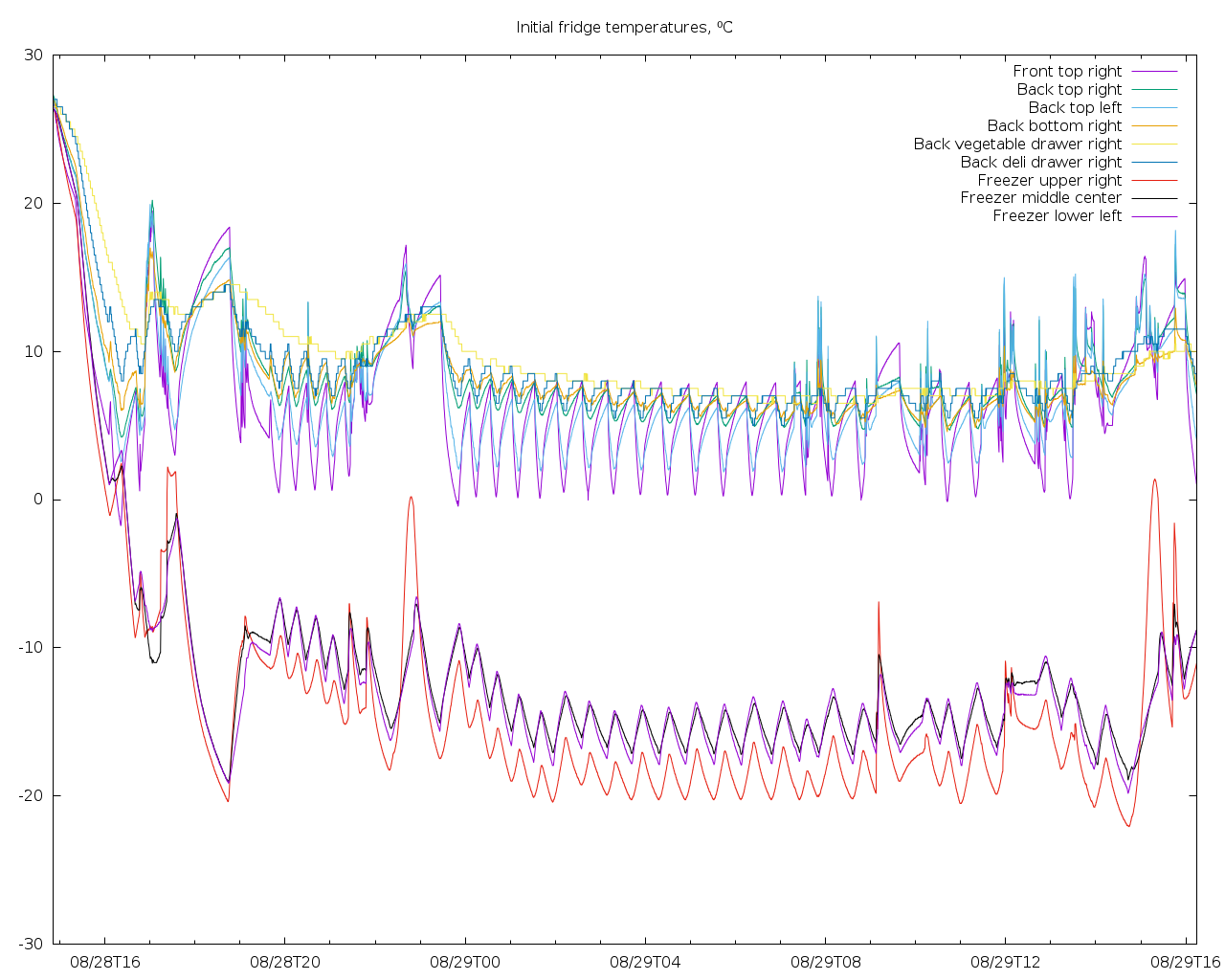New Fridge: Data
The new fridge has shorter, smaller temperature cycles than the old dead GE fridge. Measured temperatures in the fridge are still substantially higher than the setpoint of 36⁰F (2⁰C); measured temperatures in the freezer substantially higher than the setpoint of 0⁰F (-18⁰C). And the manual contains no instructions on changing the setpoints. It says where the buttons are (duh, those are obvious) but not how to use them, and the installers said that once set, the setting could not be changed for 24 hours (nothing in the manual about that).
The answers.lg.com web site says “Continue pressing the temperature button for your refrigerator. It has a set range of temperatures. Once it reaches its lowest available setting, it will switch back to the top of the range and begin decreasing again. The freezer operates in the same fashion.” You’d think they could put that in the manual that’s almost 1cm thick.
Then I found http://www.refrigeratorpro.com/lg-lmx25964-not-cold-enough-heres-how-to-fix-it.html which isn’t about my fridge exactly but may be relevant.

Michael K Johnson August 30, 2015 08:55
Two of the fridge 18B20s were from a different batch than the rest. They don’t appear to be at the default 12-bit resolution. Sadly, it looks like the w1-therm driver doesn’t have an interface for configuring the resolution.
Michael K Johnson September 01, 2015 06:45
I bought three fridge/freeze thermometers. One I put in the top right side of the fridge, one in the deli drawer, and one in the freezer.
All six 18B20s in the fridge report temperatures consistently above the setpoint. But both fridge thermometers read at the setpoint. Gives me more confidence that the setpoint is the temperature that the fridge keeps the food at… They draw about 3mW during conversion, but the low-resolution units with an order of magnitude shorter conversion time (when they draw power) don’t read lower than the other units set to full resolution, so I don’t think the apparent offset is due to internal heating.
At the same time, the difference of 3⁰C or more compares unfavorably to the “maximum” error of the 18B20 as reported in the datasheet for this temperature range: ±0.5⁰C
Hmm. At least the old-school liquid-based thermometers agree with each other and make me believe that the food is probably safe. ☺
Imported from Google+ — content and formatting may not be reliable